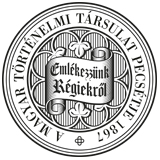Századok – 2007
TANULMÁNYOK - F. Romhányi Beatrix: Pálos gazdálkodás a 15-16. században II/299
PÁLOS GAZDÁLKODÁS A 15-16. SZÁZADBAN 351 the Pauline monastery in Rome is discussed, whose estate management differed in several ways from what was general in Hungary, although our charters show many of its elements to have existed here on a smaller scale. Nevertheless, all the estates of the order were not sufficient to maintain its administration, and sometimes not even for the sustenanance of the monks themselves. That it was so is proved by two royal donations of salt, which yielded annually 400 forints, and whose payment was regularly urged for by the order as late as the 1530s. Moreover, the order was also largely dependent, especially in the 16th century, on other pious donations. Most of these consisted in ready money or estates easily convertible to cash. This is clearly a mendicant feature in the economy of the Pauline order. By the end of the Middle Ages the Pauline Order had therefore created an economic system which can be regarded as unique in Hungary. Partly based on their possessions they turned gradually, at the turn of the 15th and 16th centuries, to capitalistic forms of estate management. The individual estates were governed either from the monasteries or from the chief monastery of Budaszentlőrinc. Part of the revenues of the major monasteries went to the monastic centre, whereof the order could support the poor. Yet direct donations of money continued to play a major role, and, according to the charters copied into the formulary, their importance grew further during the eventful years of the 16th century. With some exagération it can be stated that the economic system of the order was as complex as its monastic aspect. But whereas the latter was a mixture of the three traditional monastic trends (monastic, eremitical, mendicant), in the former there continued to live together traditional economic forms with mendicant direct donations and the elements of a new capitalistic economy.
